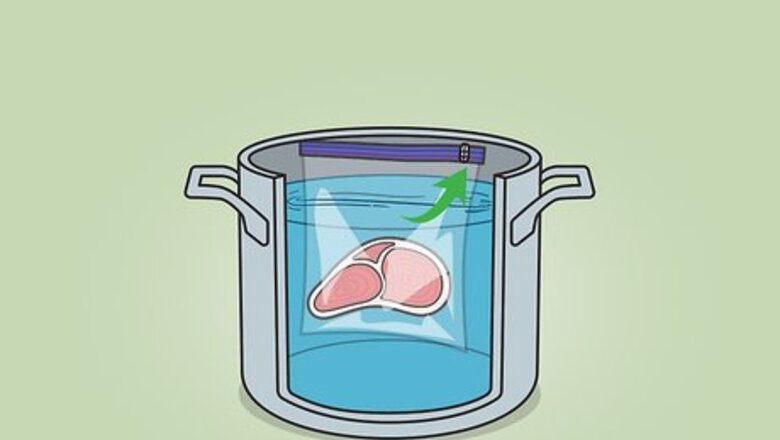
views
Can you vacuum seal without a machine?
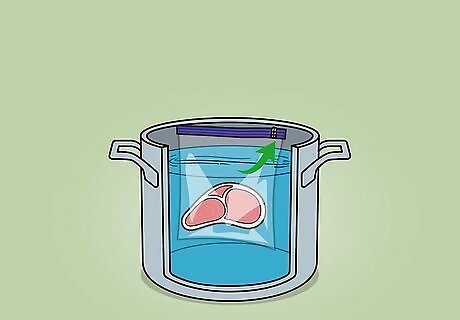
Yes, you can vacuum seal food using a tub of water. Place the item you want to store in a ziplock bag, and seal the bag up to about an inch (two or three centimeters) from one edge. Submerge the bag in a large pot of water until only the unsealed corner sticks out of the water. Pinch the corner closed when the water forces most of the air from the ziplock bag. You can also: Place the item you're storing in a ziplock bag, then put a straw into the bag. Seal the bag, leaving only room for the straw to protrude from the opening, then suck the air out of the bag through the straw. Place the item you want to store in a ziplock bag, close the ziplock seal, but leave a corner of the bag unsealed. Place that bag into a larger ziplock bag. Insert a vacuum hose into the larger bag, then seal the larger bag around the vacuum hose.
How to Use a Vacuum Sealer
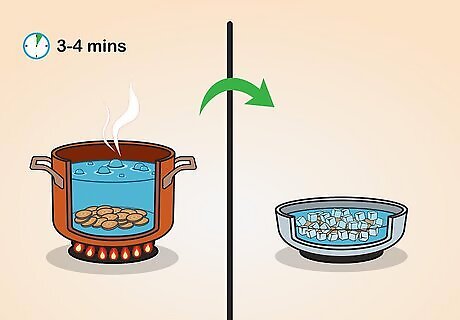
Blanch veggies before packing and freezing them. You'll better preserve their flavor and nutritional value if you blanch your veggies before packing and freezing them. Place veggies in a large pot of boiling water, cover them, and heat them for three to four minutes. Use a slotted spoon to transfer them from the pot to a bowl of ice water. Pat the vegetables dry after their ice bath.
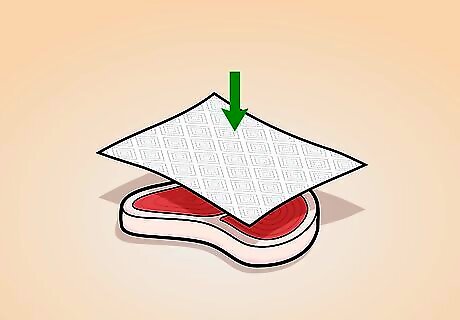
Pat dry or season meats before vacuum sealing. If you're vacuum sealing a piece of meat without seasoning it, just pat it dry with a paper towel before placing it into the vacuum bag. If you prefer, before packing up your meat, you can infuse it with flavor by mixing seasonings or a marinade. For example, pack up a piece of salmon with salt, pepper, dill, and a slice of lemon to infuse the fish with these flavors. Or you can vacuum seal pre-seasoned meat, like beef or deer jerky, to lock in both flavor and freshness.
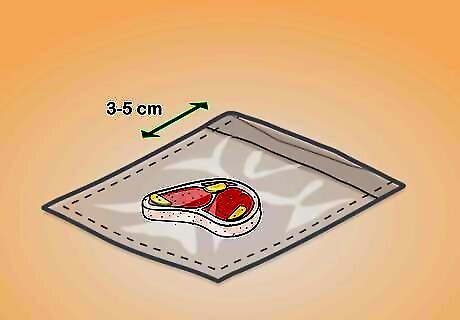
Place the item in a vacuum bag with the top folded. When you've prepared your food for packing, place it into a vacuum bag large enough to fit the item with some room to spare. Fold the edges of the bag's opening over so your food doesn't make a mess as you place it into the bag. Make sure there's one to two inches (three to five centimeters) between the food item and side of the bag that you're sealing. That way, you'll have room to lock the sealer's lid over the bag's opening. Some vacuum seal bags have a maximum fill line, so check your product for a line near its opening.
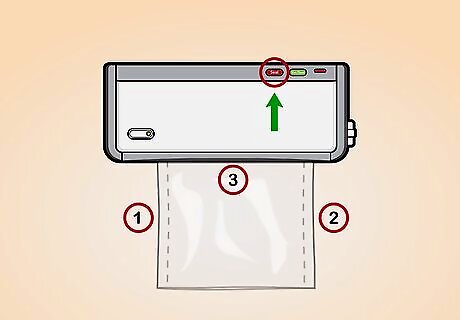
Use your sealer to make vacuum bags. You can make vacuum bags by placing two equally sized plastic sheets on top of each other. Place one side of the plastic sheets into the vacuum sealer and press the Seal Only button to heat seal the sheets' edges together. Repeat the process to create heat seals on three sides, leaving one side open for you to pack the item you want to vacuum seal.
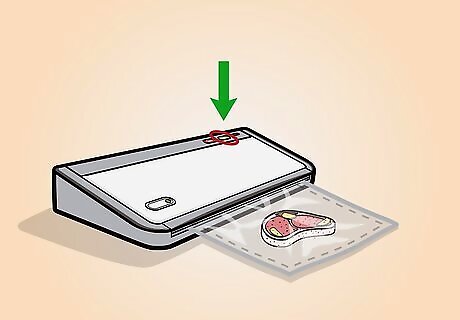
Lock the bag into the sealer and press the vacuum seal button. Open the sealer lid, position the bag's opening at the vacuum mouth, then close the sealer lid and listen for a click that indicates it's locked. Once it's locked, press the Vacuum Seal button to activate the appliance and compress the bag. Sealers usually have one button to vacuum and automatically seal and another just for sealing. Check your user manual for specific information about how your device's controls are labeled.
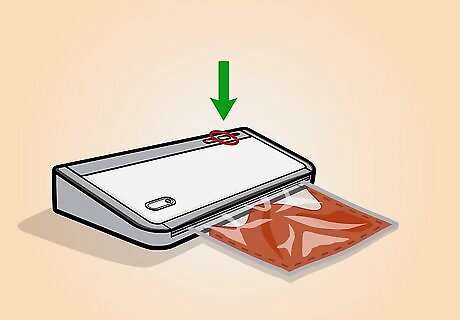
Seal bags that contain liquid manually. To seal bags with liquid, watch the bag after you've pressed Vacuum Seal. Press the Seal Only button when you start to see liquid move up the bag. After sucking out the last bit of air, the vacuum will start pulling the liquid out, so you should use the Seal Only option to manually seal the bag. To pack items without liquid, you can just press the Vacuum Seal button and let the device seal your bag automatically.
How to Vacuum Seal for Home Storage
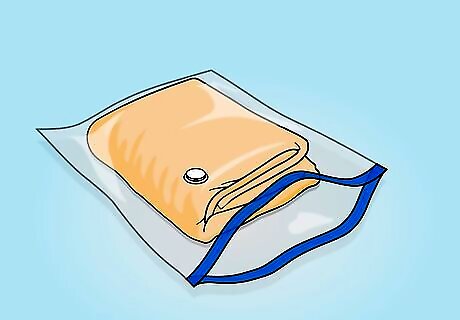
Pack your items into a storage bag without overfilling it. Note the maximum fill line on your vacuum seal storage bags, and avoid overfilling them to keep them in the best shape. Your packed items should be dry, and you should avoid vacuum sealing objects with sharp corners or hard ridges.
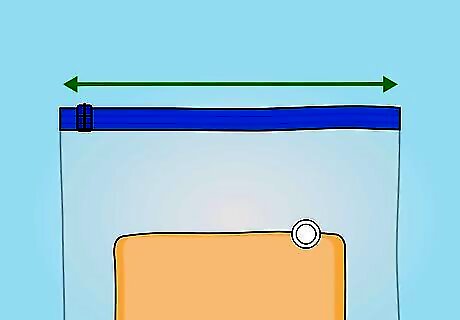
Use the zip slider to seal the bag. After filling your storage bag, take the zip slider firmly between your thumb and index finger. Run it down the length of the bag's opening at least twice. Then check the ziplock seal with your fingers to ensure the bag is correctly sealed.
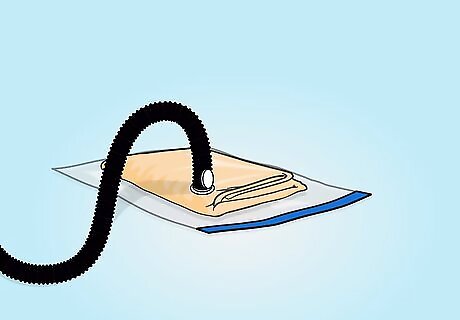
Open the valve and place your vacuum hose over it. After sealing the bag, locate the valve and remove the top cap. Place your vacuum hose directly over the valve. Turn the vacuum on, and watch as it starts to suck the air out of the storage bag.
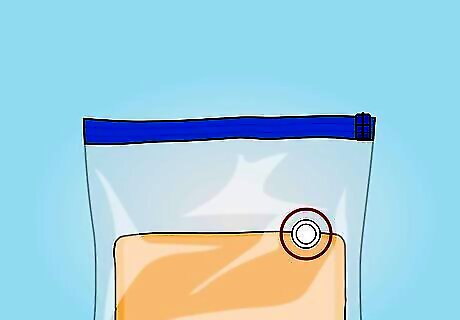
Close the valve cap after you've finished vacuuming it. Once you've vacuumed out as much air as possible, your clothing, blankets, or other sealed item should have reduced in size by about half. Pop the cap back over the valve, put the vacuum away, and store your vacuum sealed bag in a safe place. Avoid storing a bag in a hot place or just throwing it in the closet. It might get damaged in high temperatures or if it accidentally hits a sharp object.













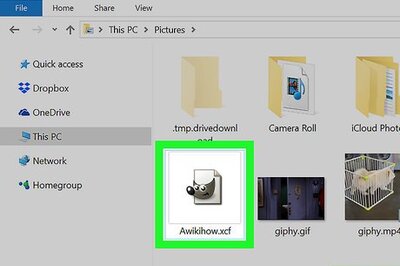




Comments
0 comment